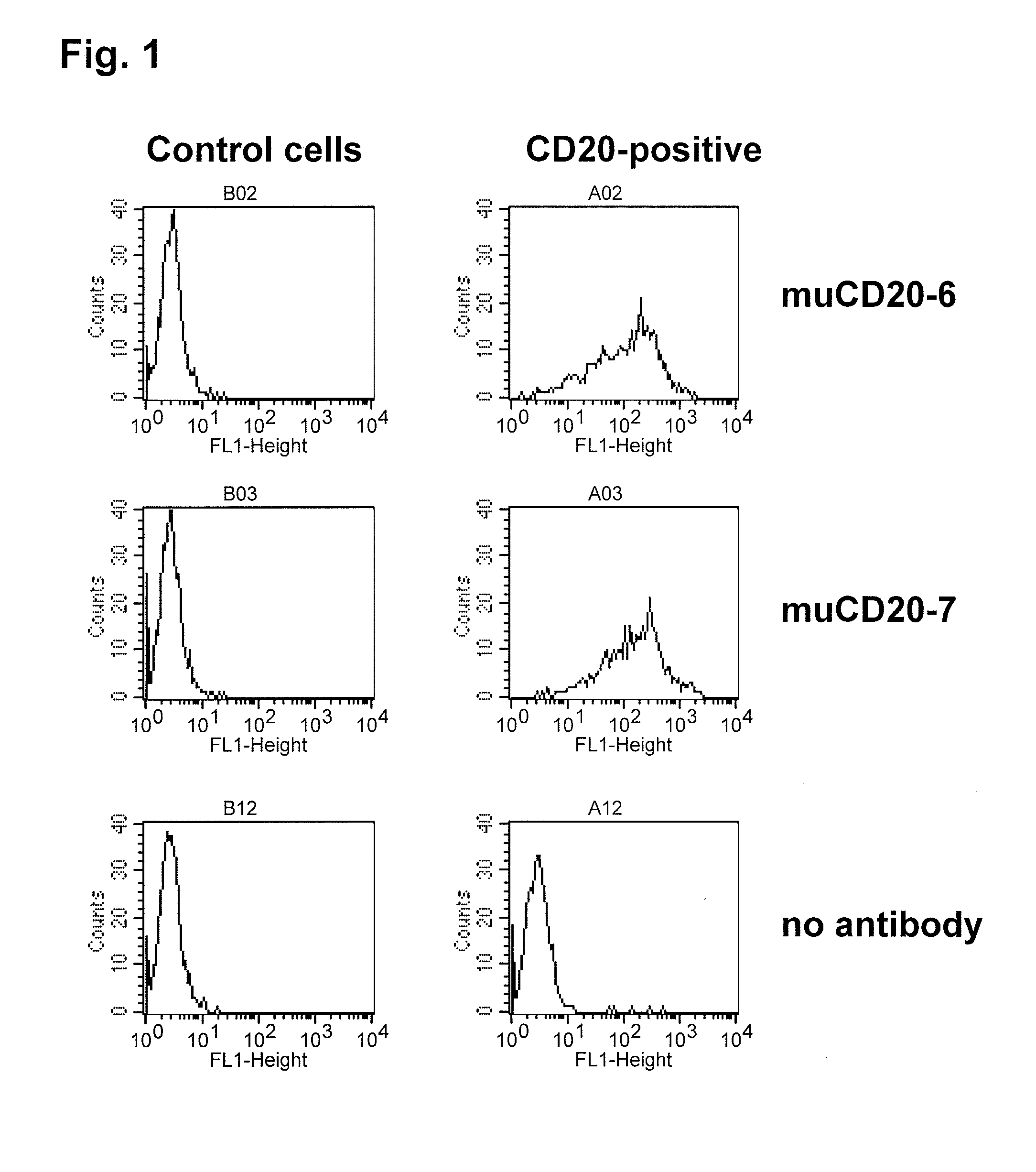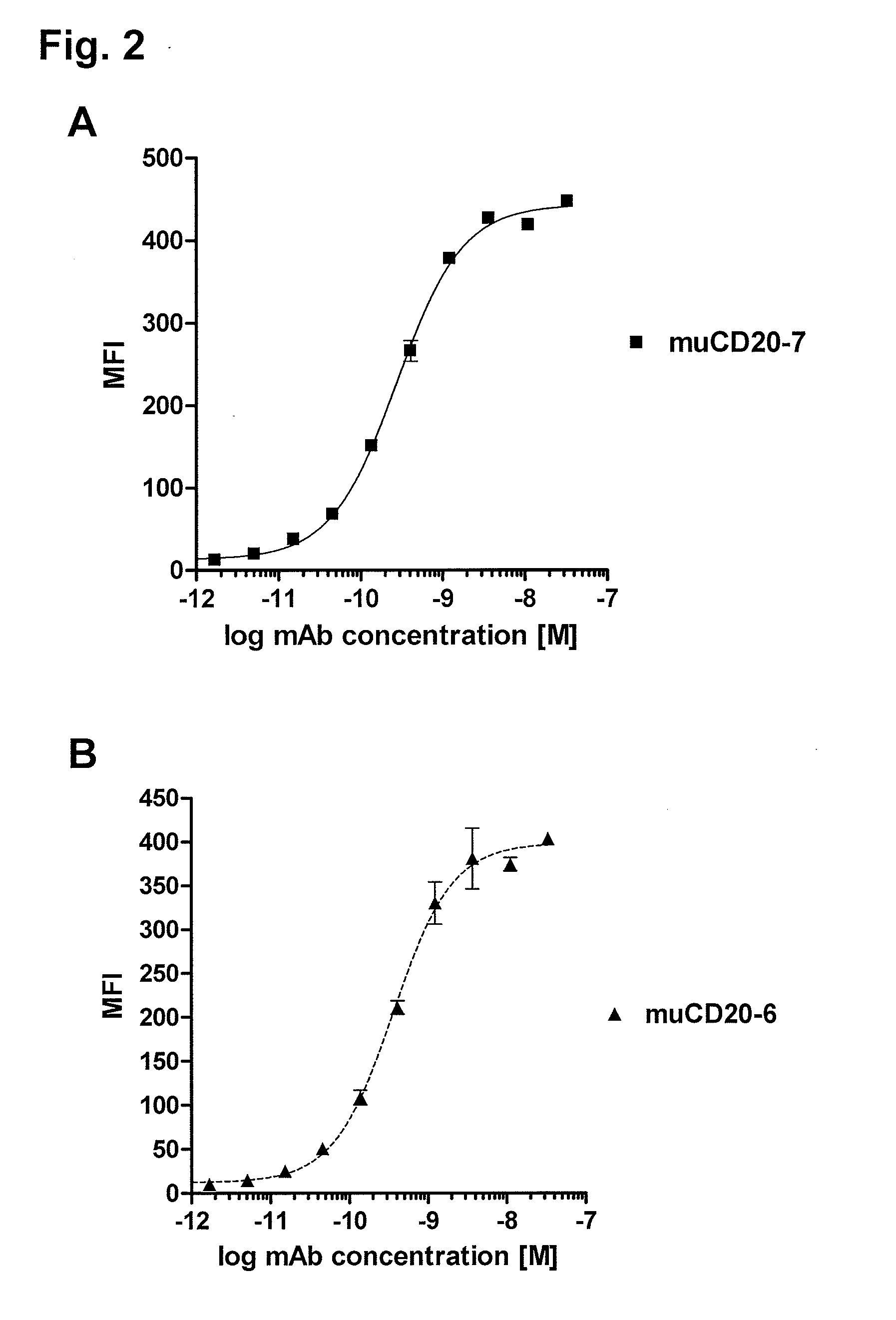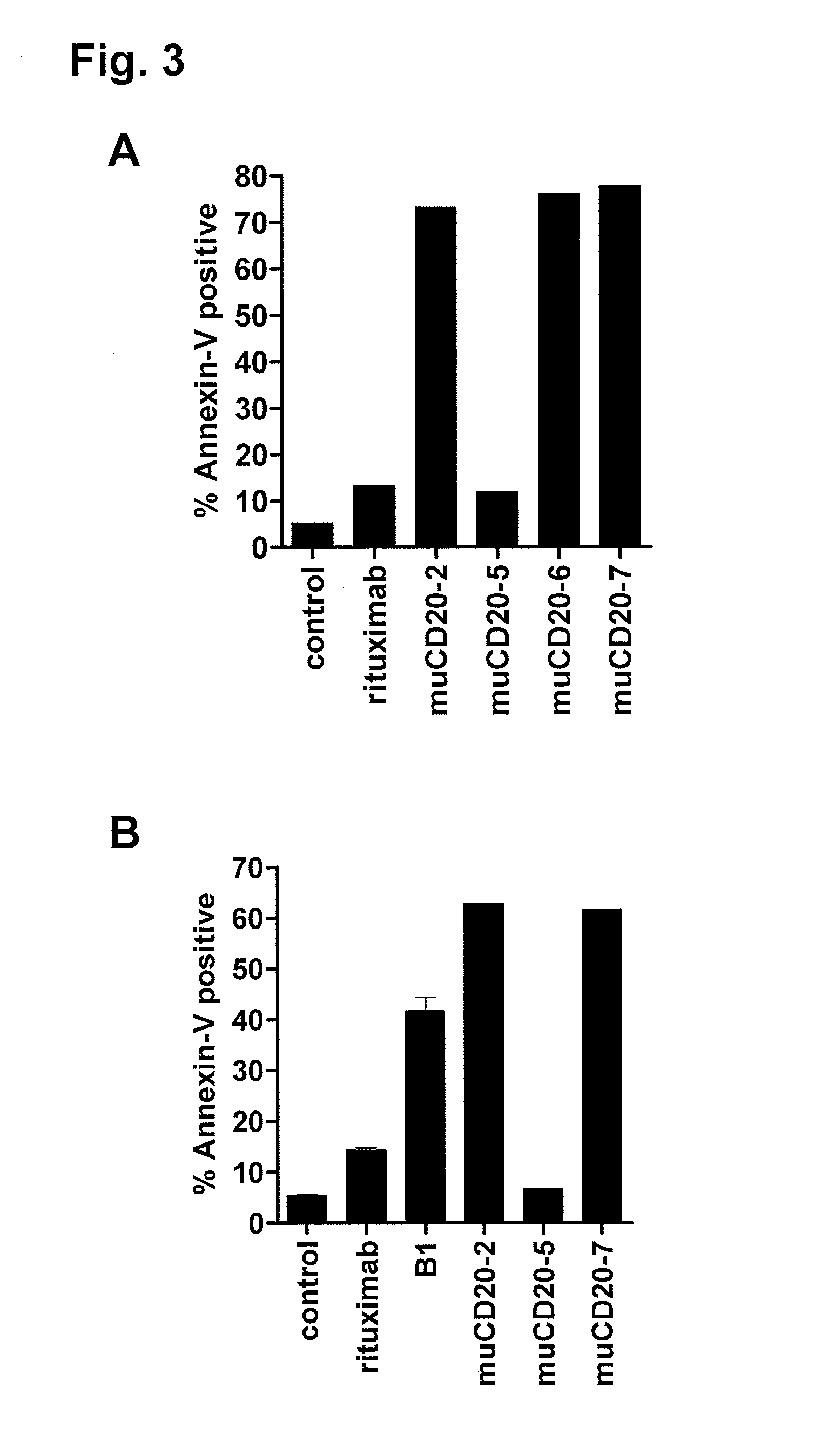Cd20 antibodies and uses thereof
a technology of cd20 and antibodies, which is applied in the field of cd20 antibodies, can solve the problems of not being able to find novel molecules having unique physical and functional features addressing the problems known in the art, and the type i antibodies typically do not have effective pro-apoptotic activity on their own, so as to improve the adcc function, improve stability, and increase stability
- Summary
- Abstract
- Description
- Claims
- Application Information
AI Technical Summary
Benefits of technology
Problems solved by technology
Method used
Image
Examples
example 1
Production of Murine CD20 Antibodies
[0492]An expression plasmid pSRa-CD20 was constructed that contained the entire CD20 coding sequence (CDS) flanked by XbaI and BamHI restriction sites that allowed expression of human CD20 (GI 23110989). 300-19 cells, a pre-B cell line derived from a Balb / c mouse (Reth et al., Nature, 317:353-355 (1985)), was transfected with this expression plasmid to stably express high levels of human CD20 on the cell surface and used for immunization of Balb / c VAF mice. Mice were subcutaneously immunized with approximately 5×106 CD20-expressing 300-19 cells per mouse every 2-3 weeks by standard immunization protocols known to those of skill, for example, such as those used at ImmunoGen, Inc. Immunized mice were boosted with antigen three days before being sacrificed for hybridoma generation. Spleens from mice was collected according to standard animal protocols, such as, for example grinding tissue between two sterile, frosted microscopic slides to obtain a si...
example 2
Binding Characterization by Flow Cytometry
[0499]Binding specificity was tested by flow cytometry using purified antibodies. FACS histograms demonstrating the binding of muCD20-7 and muCD20-6 to CD20-expressing 300-19 cells and the absence of binding to the parental 300-19 cells are shown in FIG. 1. Either muCD20-7 or muCD20-6 antibody was incubated for 3 h with either CD20-expressing 300-19 cells or the non-transfected 300-19 cells (1×105 cells per sample) in 100 μL FACS buffer (RPMI-1640 medium supplemented with 2% normal goat serum). Then, the cells were pelleted, washed, and incubated for 1 h with 100 μL of FITC-conjugated goat anti-mouse IgG-antibody (such as is obtainable from, for example Jackson Laboratory, 6 μg / mL in FACS buffer). The cells were pelleted again, washed with FACS buffer and resuspended in 200 μL of PBS containing 1% formaldehyde. Samples were acquired using a FACSCalibur flow cytometer with the HTS multiwell sampler or a FACS array flow cytometer and analyzed ...
example 3
Pro-Apoptotic Activity of Murine Anti-CD20 Antibodies
[0502]The anti-CD20 antibody muCD20-2, muCD20-6 and muCD20-7 induced apoptosis of lymphoma cell lines. The degree of apoptosis was measured by flow cytometry analysis after staining with FITC conjugates of Annexin-V (Invitrogen) and with TO-PROS-3 (Invitrogen). In healthy, normal cells, phosphatidylserine is on the inside of the membrane bilayer, and the transition of phosphatidylserine from the inner to the outer leaflet of the plasma membrane is one of the earliest detectable signals of apoptosis. Annexin V binds phosphatidylserine on the outside but not on the inside of the cell membrane bilayer of intact cells. The degree of Annexin V binding is therefore an indicator of the induction of apoptosis. TO-PROS-3 is a monomeric cyanine nucleic acid stain that can only penetrate the plasma membrane when the membrane integrity is breached, as occurs in the later stages of apoptosis. Three populations of cells are distinguishable in t...
PUM
| Property | Measurement | Unit |
|---|---|---|
| concentration | aaaaa | aaaaa |
| pH | aaaaa | aaaaa |
| pH | aaaaa | aaaaa |
Abstract
Description
Claims
Application Information
 Login to View More
Login to View More - R&D
- Intellectual Property
- Life Sciences
- Materials
- Tech Scout
- Unparalleled Data Quality
- Higher Quality Content
- 60% Fewer Hallucinations
Browse by: Latest US Patents, China's latest patents, Technical Efficacy Thesaurus, Application Domain, Technology Topic, Popular Technical Reports.
© 2025 PatSnap. All rights reserved.Legal|Privacy policy|Modern Slavery Act Transparency Statement|Sitemap|About US| Contact US: help@patsnap.com



